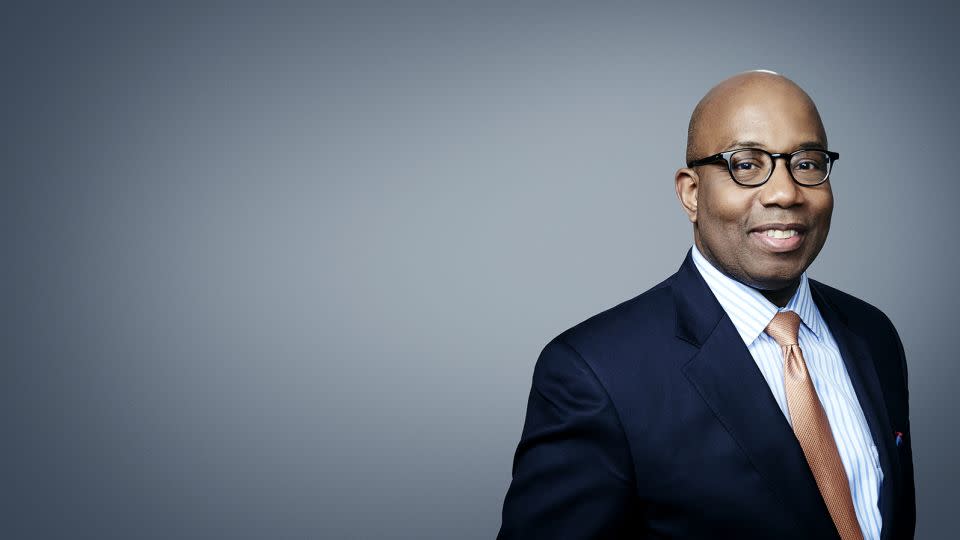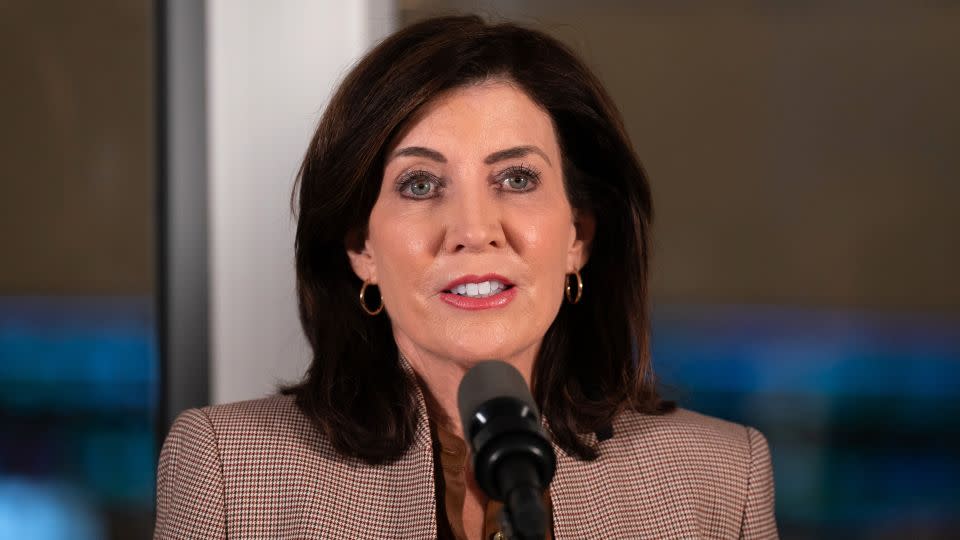Opinion: New York’s showy crackdown on subway crime is the wrong approach
- Oops!Something went wrong.Please try again later.
- Oops!Something went wrong.Please try again later.
Editor’s Note: Errol Louis is a political anchor of Spectrum News, a network of local news channels. The views expressed here are his own. Read more opinion on CNN.
After several high-profile violent attacks, New York Gov. Kathy Hochul has declared war on crime in the city’s subway system. But she may be fighting the wrong battle with the wrong weapons in a situation that needs a scalpel, not a sword.

Under Hochul’s plan, 750 members of the New York National Guard will be deployed underground, decked out in camouflage and armed to the teeth with body armor, sidearms and rifles. They will be joined by 250 officers from the New York State Police and MTA Police, who will set up random bag search checkpoints.
“No one heading to their job or to visit family or to go to a doctor appointment should worry that the person sitting next to them possesses a deadly weapon,” said Hochul. “They shouldn’t worry about whether someone’s going to brandish a knife or gun. That’s what we’re going to do at these checkpoints.”
In addition to the ostentatious show of force, Hochul is calling for many more surveillance cameras, stiffer criminal penalties for repeat offenders and a new law that would ban people from the subways for at least three years if found guilty of committing violent crimes underground.
Hochul’s strong measures come in response to a spate of violence that has rattled New Yorkers. A subway conductor named Alton Scott recently suffered horrific wounds after an unknown person slashed his neck when Scott stuck his head out of the conductor’s cab to make sure the train was ready to depart.
A few weeks earlier, three people were arrested in connection to the fatal shooting of 45-year-old William Alvarez, after an argument escalated. And Iain Forrest, a subway musician, was bashed in the head with a bottle; the woman who hit him has since been arrested.
Sending nearly 1,000 members of the National Guard and cops into the subways is strong medicine, but is it the right cure?
According to an analysis by The New York Times, there was one serious violent crime in the subways for every million passenger trips in mid-2022. But public safety is partly about perception: People often get nervous walking down a dark street in the middle of the night, even when there’s no immediate threat of harm. Spotting a cop on the corner of an otherwise deserted street can certainly calm those fears in that situation — but that’s not what Hochul is proposing here.

Deploying soldiers to do random bag checks at high-volume stations during rush hour might make some commuters feel better — and it certainly creates a striking image for the news cameras — but there’s no evidence it would have prevented a random slashing or a burst of anger between passengers in the wee hours of the morning.
“We’ve had a very unfortunate spate of crimes and attacks in the subways as of late, but the data still shows that the perception is worse than the actual reality,” New York State Sen. John Liu told the New York Post. “I can understand that the governor wants to look like she’s addressing this, but the efforts have to be more sustained and not just off the cuff.”
The New York Police Department, which is primarily responsible for patrolling the subways, doubled the number of officers underground in 2022 in response to a shooting, and New York City Mayor Eric Adams — who was a transit cop before turning to politics — has publicly mused about somehow installing metal detectors throughout the system’s 472 subway stations.
But many of the problems underground — in substance and definitely in perception — spring from the disorder linked to the thousands of seriously mentally ill people who are estimated to be on the streets and subways of the city.
The shocking murder of Michelle Go, a woman pushed onto the tracks in 2022, was committed by a mentally ill homeless man. Jordan Neely, a subway performer who’d suffered from addiction and mental illness, was choked to death by a man now facing manslaughter charges (to which he has pleaded not guilty), after Neely began shouting and acting out on a subway car, frightening passengers.
Approaching and offering treatment to mentally ill people is tough, demanding work that requires social workers, not soldiers. Hochul’s plan calls for more teams of social workers to scour the subways and offer assistance to people in distress — but it plans to supplement these teams with law enforcement officers. That sends the wrong message: seriously mentally ill people need help, not handcuffs, and should be contacted by medical professionals rather than cops. It doesn’t result in photo ops, but it may be the right way to get control of a safety issue that seems about to go off the rails.
For more CNN news and newsletters create an account at CNN.com

